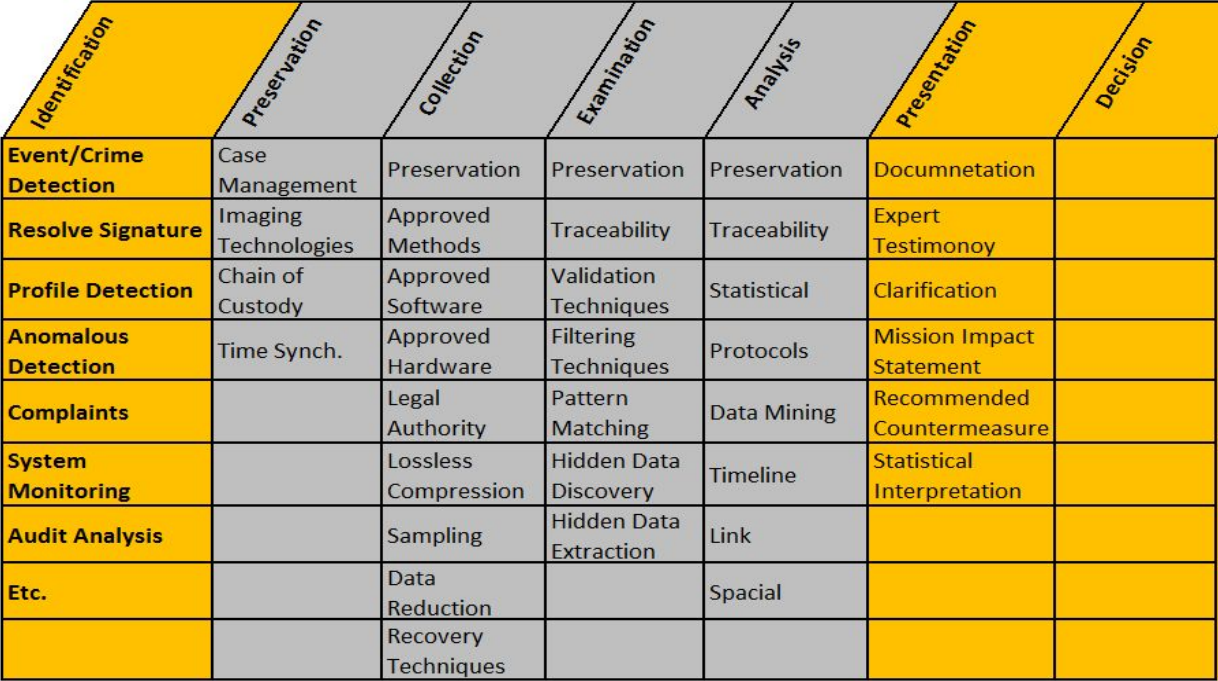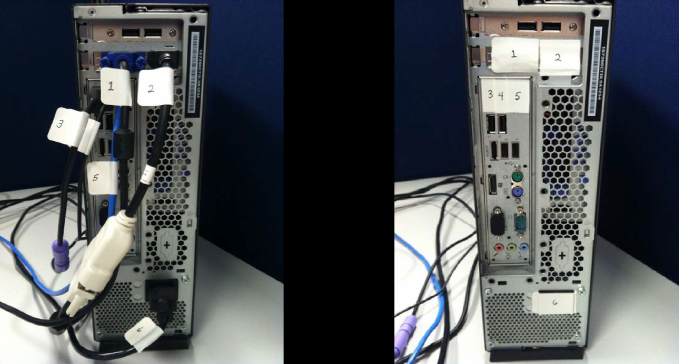1.12. ACPO Guidelines #
Digital Forensic Process #

Before Arriving at the Scene #
- Understand the nature of the investigation
- Legal case or internal investigation
- Technical (e.g. DoS attack, remote attack) or non-technical case (e.g. drug dealing)
- Find out the computer skill level of the suspect
- Taking all necessary equipment
- Write-blockers
- Hard drive
- Imaging devices
- Screwdrivers
- Gloves
- Evidence bags
- Evidence inventory forms
- Video/camera with batteries
- Storage space
Things to do First #
- Avoid evidence contamination (limiting access to scene, protective clothing)
- Identify the state of digital devices:
- Computers: on, off, hibernate, sleep, networked?
- Mobile devices: on, off, battery level, connected to computer?
- Locate additional evidence containers, such as USB drives, CD/DVDs, sticky notes
Handling the Devices #
- Whether the device was on or off when found, leave it in that state
- If the device was switched on:
- Decide whether to pull the plug, shutdown via OS, perform live acquisition
- Live acquisition:
- Provides minimal downtime
- Lists running processes
- Some data is only available in RAM (encryption keys, private browsing, etc.)
- If not handled properly, potential evidence could be contaminated or destroyed.
- If the device was switched off:
- Take photos
- Label cables
- Disconnecting cables
- Get ready for packaging

Documentation #
- Documenting the complete journey of the evidence during the life of the case to maintain the Chain of Custody
- Can be used to answer questions such as:
- Who collected what data and when?
- How and where?
- Who took possession of what?
- How was something stored and protected in storage?
- Who took it out of storage and why?
- When was it returned to the evidence locker and by whom?
Storage and Transportation #
- Keep electronic evidence away from magnetic sources
- Protect from extreme changes in temperature
- Use proper anti-shock material, such as bubble wrap
- Prolonged storage can result in alteration of evidence, since batteries have limited life span (like BIOS)
- Store all seized evidence in a properly secured storage area
Rules of Evidence #
- Authentic
- It came from where it was supposed to
- Evidence must be tied to the incident in order to prove something
- Reliable and Accurate
- No doubt for authenticity and nothing has been contaminated
- Complete
- The whole story needs to be there
- Admissible
- In conformity with common law and legislative rules
- Convincing to juries
- Believable and understandable
ACPO Guidelines #
Association of Chief Police Officers (ACPO) Crime Committee published the Good Practice Guide for Digital Evidence V5 in 2012.